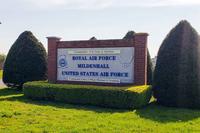 Plenty of questions have been raised over the masks worn by pro-Russian militants in Crimea and Eastern Ukraine. Many have suggested the masks have disguised the identity of Russian special forces units.
Plenty of questions have been raised over the masks worn by pro-Russian militants in Crimea and Eastern Ukraine. Many have suggested the masks have disguised the identity of Russian special forces units.
The masks are not typically associated with U.S. military camouflage, but they are in Russia. In fact, the masks are part of the Russian term "maskirovka," translated to mean disguise.
Masks have been incorporated into Russian military garb for hundreds of years. The purpose is to deny the basic identities of the troops. Wearing them is not out of the norm, especially for specialized units.
The militants had been referring to themselves as Cossacks. Officials like NATO Commander Gen. Philip Breedlove have rejected that notion and said these militants are being directed by the Russians. The masks make it harder for the U.S. to specifically identify the troops.
Time Magazine's Mark Thompson wrote an interesting history on the use of the mask by the Russian military and extended it to their use of concealment throughout their history. In fact, Thompson discussed some of the techniques used throughout World War II to include white uniforms in Finland.
“Maskirovka may be conducted in any environment to deny information to sensors,” a 1988 Pentagon study of the technique said. What’s on display in Ukraine is maskirovka in its most basic form: physical masks, known as balaclavas (named for their use at the Battle of Balaclava, a Ukrainian town near Sevastopol, during the Crimean War) are designed to deny humans’ most fundamental sensor—the eye—critical information about the person on the other side (to complicate matters, some Ukrainian supporters also are wearing masks).








